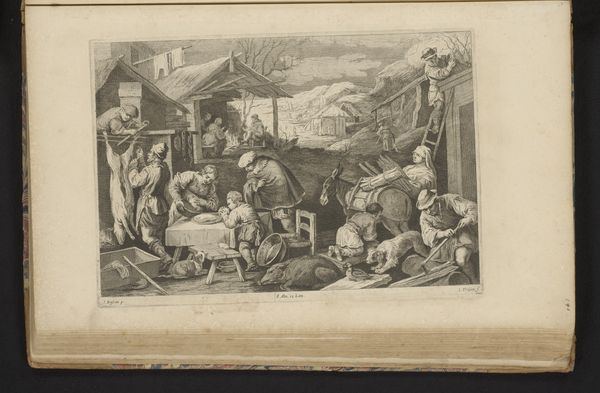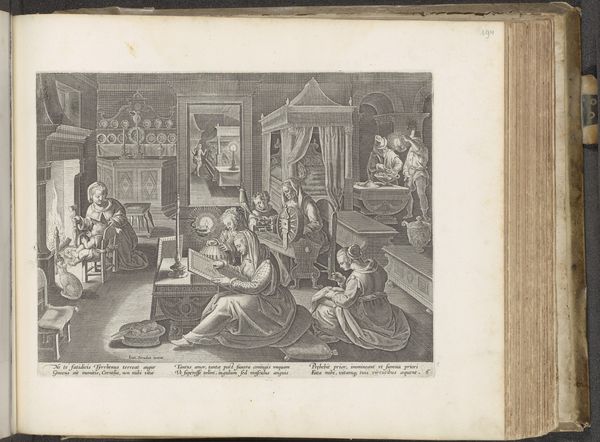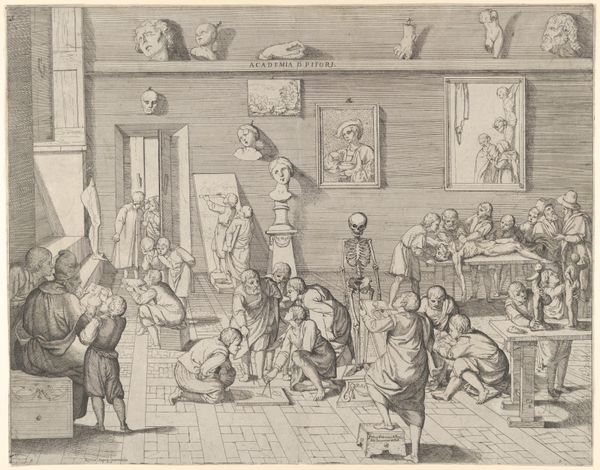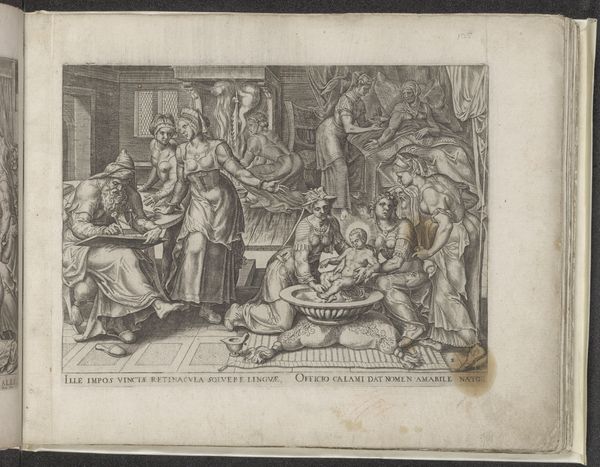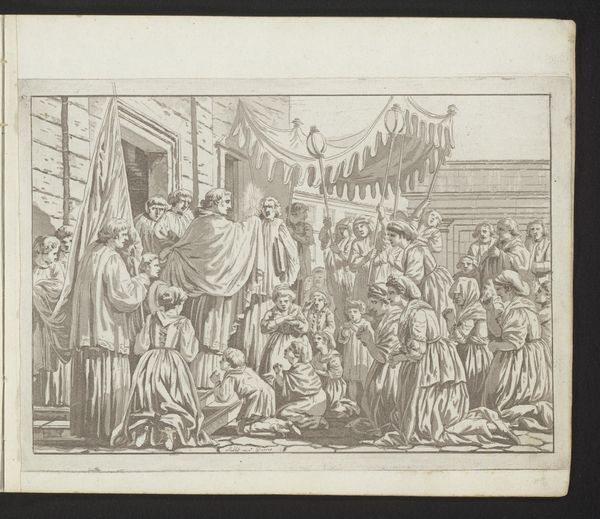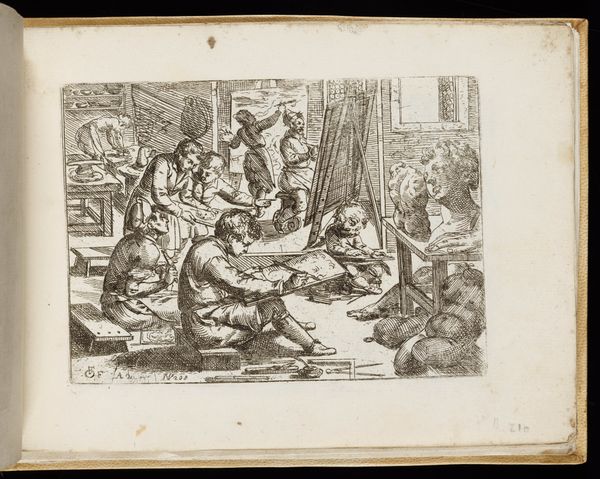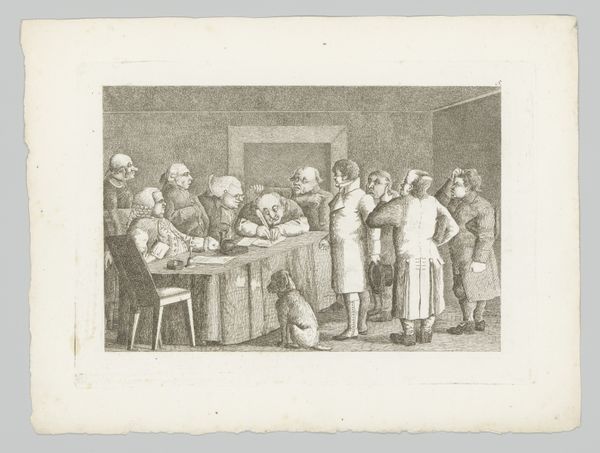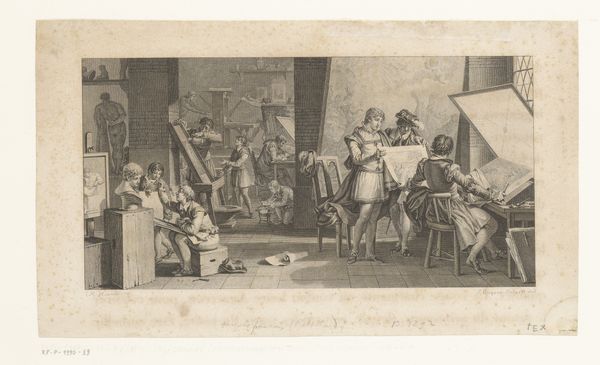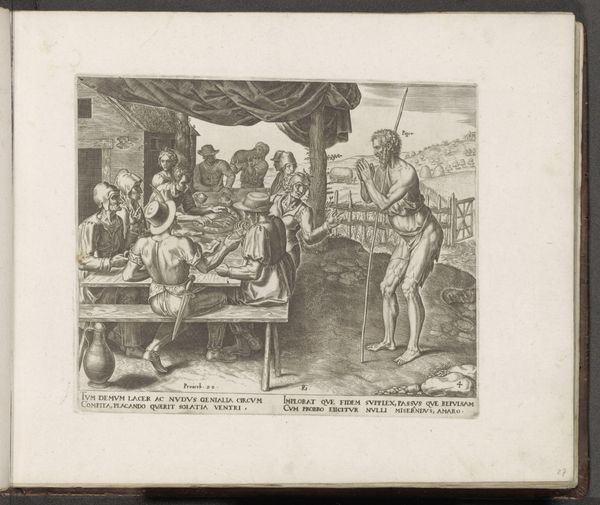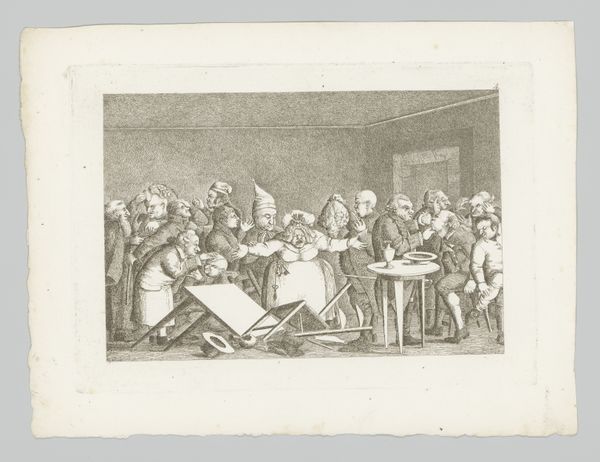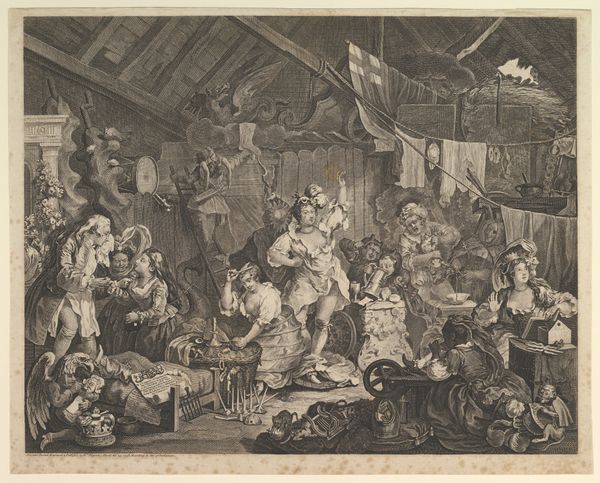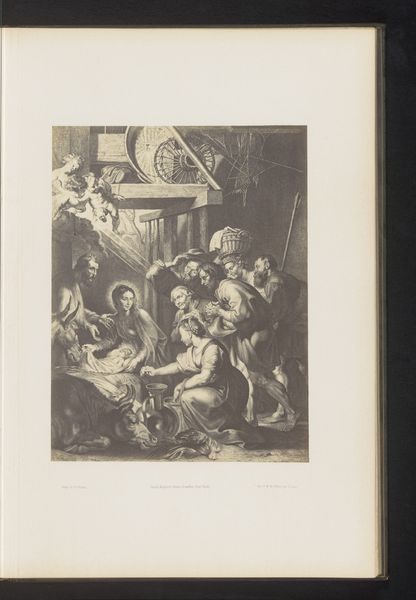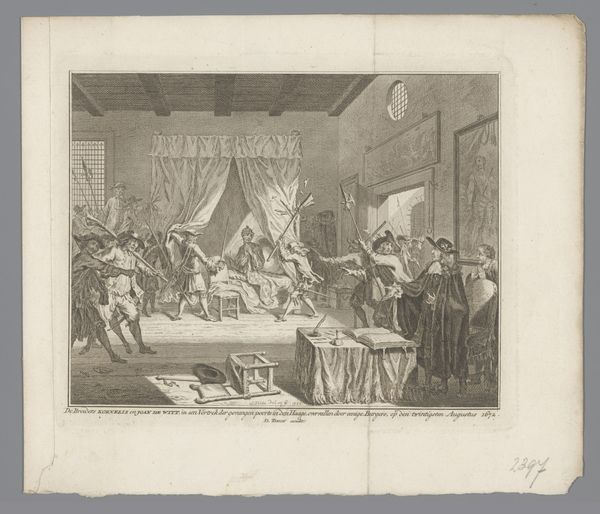
Dimensions: height 202 mm, width 270 mm
Copyright: Rijks Museum: Open Domain
Curator: I am drawn to the dynamic composition in this pen drawing. Louis Ducros created "Verschillende mensen bij een voedselkraam," dating from 1758 to 1810, now held at the Rijksmuseum. The arrangement of figures and objects yields a lively scene. Editor: Indeed! It's a bustling market scene. The image buzzes with implied sound, full of diverse humanity. This food stall acts as a symbol of daily life, nourishment, perhaps even excess during its time. What kind of stories might these individual people be holding? Curator: Note the artist's command of line. The intricate cross-hatching establishes form, delineates fabric folds, and implies the play of light and shadow across the whole pictorial surface. Editor: I see a story of social classes, perhaps. The fine clothing of some figures against the more rugged garments of others evokes the growing disparities within that 18th-century society. Curator: Precisely. And consider how the stall anchors the composition. The artist used the stall's structure to generate linear perspectives while it serves as the locus of all commercial interactions. Editor: The visual symbols present provide an inviting lens through which we can glimpse how ordinary people conducted everyday commerce. Consider those children pointing at something on the side of a cooking barrel: Are they hungry? Curious? We don't have firm answers. Curator: In effect, this drawing showcases a structured layering from foreground to background that lends depth. Consider how those cobblestones anchor our perception of perspective—they establish an ordered structure for a chaotic streetscape. Editor: Overall, the image feels to me as a vibrant memory capsule that holds cultural hopes, or at least portrays collective experience during a time when Europe itself was rapidly changing shape. It speaks about community, though that definition of community was subject to limitations and conditions depending on wealth, position, gender. Curator: It provides an invaluable framework through which to examine societal dynamics—social stratifications, trade practices—using its form as both index and aesthetic. Editor: True, there are so many facets to this slice of daily life from long ago. What an intriguing depiction.
Comments
No comments
Be the first to comment and join the conversation on the ultimate creative platform.
